To smoothly change the intensity of the lighting in the room, a special device is used - a dimmer. But it cannot be used with conventional energy saving chandeliers. Dimmable LED bulbs are specially designed for this function.
- Features of the dimmer
- The operation of a dimmable led lamp and its differences from the usual
- Benefits of using devices
- Product quality criteria
- Lamp shape and its effect on lighting
- Flickering of light and methods of detecting it
- Dimming level limits
- Power and operating voltage
- Luminous flux and efficiency
- Colorful temperature
- Color rendering index
- Base and body
- Life time
Features of the dimmer
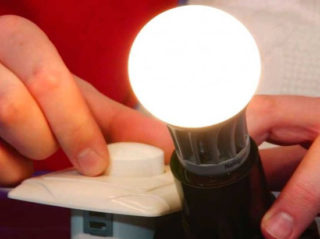
The simplest device for adjusting the light intensity is a variable resistor or rheostat. Small electronic dimmer is widely used. In this case, a semiconductor switch is used as a power element. The lighting intensity is controlled by changing the voltage in the rheostat.
The dimmer is predominantly made in the form of a switch, which allows it to be placed in a standard box. The lighting power is adjusted by turning the handle. Dimming of LED luminaires can also take place in automatic mode. In this case, a sensor is installed in the room that measures the level of illumination. The dimmable lamp reacts to any fluctuations by changing the intensity of work.
The main parameter of a dimmed unit is called the output power. The number of LEDs that can be connected to the system depends on it.
The operation of a dimmable led lamp and its differences from the usual
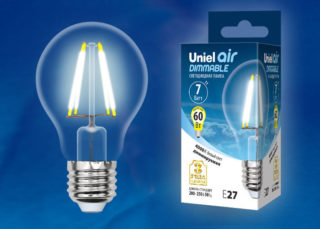
Most dimmable LED bulbs are similar in appearance to regular LED bulbs. All differences are only in the power driver circuit.
For a non-dimmable lamp, a constant voltage is required, which is converted from AC to the network. At the same time, it decreases to the optimal value. The diode power driver sets a certain current and maintains it at a given level. Therefore, when the input voltage changes, such devices will fail or will not work correctly.
Dimmable chandeliers function differently. The power driver installed in this unit clearly responds to the applied voltage. Any change in it automatically increases or decreases the current strength. As a result, it is possible to adjust the brightness of the lighting. At the same time, overload protection is maintained by limiting the maximum current value.
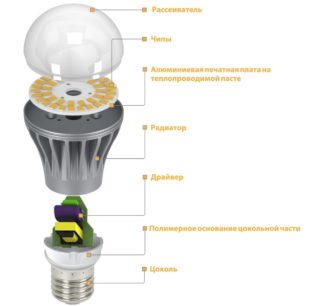
In addition to dimmable LED lamps, there are adjustable LED lamps on the market. They have great functionality. Adjustable luminaires are of the following types:
- with built-in dimmer drivers;
- with external regulators;
- with built-in driver-dimmers;
- separate dimmable driver.
The latter option is relevant when organizing the lighting of a room with several adjustable lamps.
Benefits of using devices
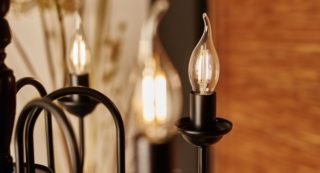
Advantages of dimmable lamps:
- Possibility to create the required level of illumination by turning a knob or pressing a button. The adjustment is carried out smoothly and not in steps.
- When the brightness of the light changes, the color temperature remains stable.
- There is a possibility of remote control. However, many models are equipped with buttons or rotary knobs.
When using dimming of LED lamps, it becomes possible to activate additional operating modes - imitation of presence, blinking, dimming. There is an automatic shutdown function. It is realized by setting a timer or other electronic control programs.
Product quality criteria
There is a lot of information on the packaging of each dimmable light bulb. To choose a functional product, you need to know what it all means.
Lamp shape and its effect on lighting
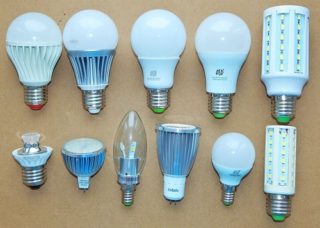
By choosing the right LED device of a certain appearance, it will be possible to achieve the optimal illumination intensity. The following forms of lamps are found on the market:
- Pear-shaped. The bulb has the same diameter as the body. These LEDs only shine forward. It is not recommended to install them in chandeliers, the shades of which are directed downward. Pear-shaped LEDs will not be able to effectively illuminate the ceiling and shadows will appear on it.
- Reminiscent of ordinary incandescent bulbs. They are used to implement traditional lighting. The angle of propagation of light beams is 240 °.
- In the form of a candle or a ball. This form was created mainly for decorative purposes. The illumination angle reaches 240-360 °. Lamps are successfully combined with open chandeliers, floor lamps, sconces.
- Reflex type. Mostly used in shops, beauty salons. A feature of the products is the creation of a targeted light beam that illuminates a specific area.
- Spot. Such products are installed in suspended or suspended ceilings, cabinet furniture to create additional or main lighting. They create a fairly large angle of light propagation - up to 100 °.
In order for the LEDs to form a soft and uniform light, LED lamps are made of frosted glass. On the inside, it has a special coating with different light transmittance. There are models with transparent glass on the market.
Flickering of light and methods of detecting it
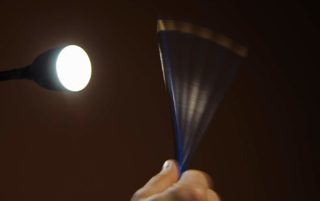
This negative effect is typical for LED and fluorescent illuminators. The flickering of light negatively affects the well-being of a person - the eyes get tired faster, headaches are possible. In the presence of this defect, the LED must not be used for residential premises. Flicker can be detected by the following signs:
- If you quickly look away from one object to another, you see double vision. This effect is called stroboscopic.
- You need to take a pencil by one end and move it like a pendulum. If no clear contours of the product are visible, the flicker of the lamp is within the normal range. When it looks like there are several pencils, the ripple of the light is very high.
- You can use a smartphone to detect flicker. Turning on a conventional camera and aiming it at a light source, you will be able to see the stripes. The brighter they are, the stronger the ripple.
It is not possible to completely eliminate the flicker effect.
Dimming level limits
Most models are able to reduce the light intensity by up to 10%. Some manufacturers produce LEDs, where this indicator ranges from 5-25%. By combining lamps with different dimmers, it is possible to achieve the required level of illumination, which depends on the compatibility of the devices.
Power and operating voltage
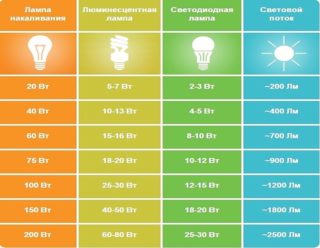
LED products are available in wattage ranging from 1 to 25 watts. To assess the efficiency of devices, their luminous flux is compared with that of incandescent lamps. Their powers are 1 in 8-10.
When choosing a lamp, depending on the operating voltage, it is better to choose models where this indicator is 170-250 V. This will protect the device from burnout, which can happen with a current surge in the network.
Luminous flux and efficiency
A feature of LED lamps is that their power does not always effectively reflect brightness. Therefore, the luminous flux is indicated on the product packaging. It ranges from 200-2500 lumens.
A significant disadvantage of LEDs is the decrease in their efficiency during long-term operation. In the first 3000 hours of operation, the brightness of the devices drops by 5%. Subsequently, the efficiency of the lamps decreases to 50% of the original value.
Colorful temperature
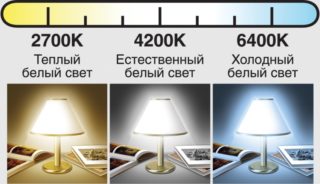
This indicator characterizes the color source in terms of spectral composition. Color temperature is measured in Kelvin. For illumination of the workplace, the optimal value is considered to be 4000-4500 K. For home, it is recommended to take a lamp with a warm color of 2700-3500 K.
Color rendering index
An important indicator that reflects the correspondence of the color obtained under artificial lighting to its real shade. The higher the CRI, the more natural objects look in the room.
Manufacturers produce lamps with a maximum value of 90 Ra.
Base and body
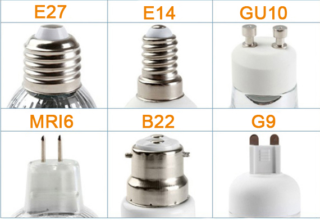
The most popular are LEDs with an E27 and E14 base. They have a standard screw connection. E27 base is used for closed lamps, E14 - for sconces, floor lamps.
Life time
The duration of the device's operation depends on its quality and operating conditions. The lamp life can be from 15 to 40 thousand hours. Devices with base / plinth ventilation can work longer.
The reasons for the decrease in lamp life are called poor-quality wiring, voltage drops, factory defects. The operation of LEDs will worsen and too low air temperatures, high room humidity.

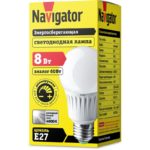
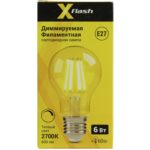
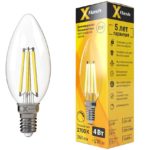
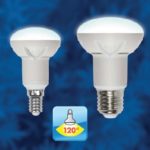
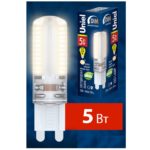








Regular household dimmers do not regulate voltage. They regulate the power dissipated on the load. The brightness of the diode cannot be regulated by voltage. The diode is not regulated by the brightness, but by the glow time (in fact, the average power).